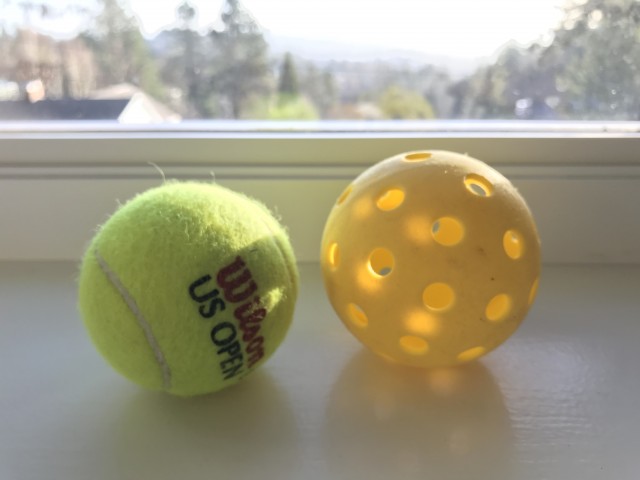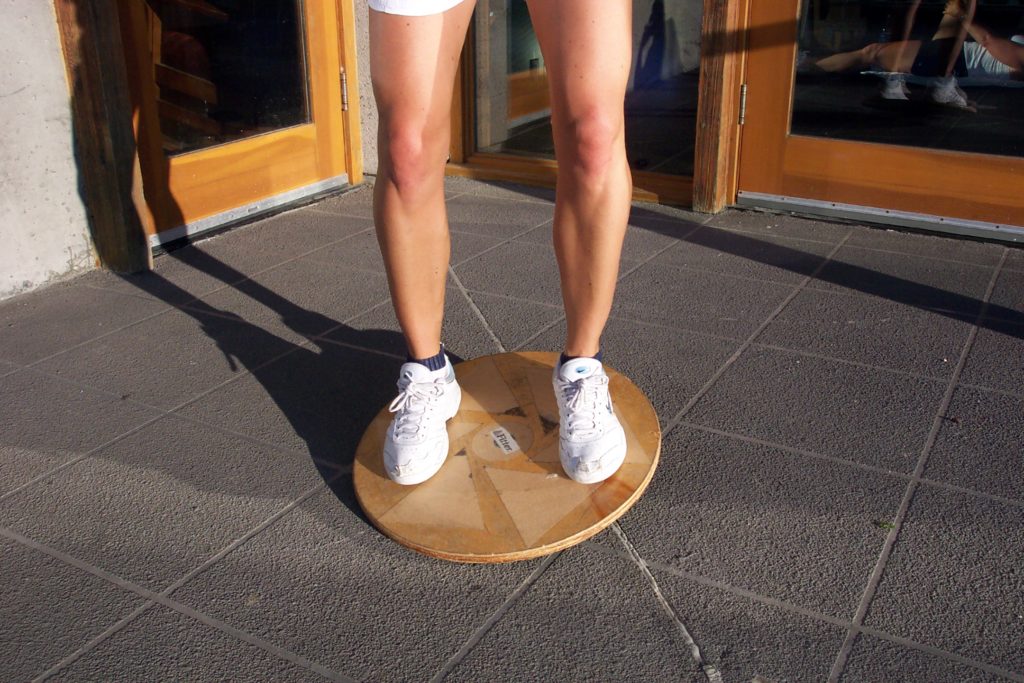
Using an unstable base like a wobble board will increase to balance reactions.
by Carl Petersen BPE, BSc (PT)
BALANCE EXERCISES & DRILLS
As physiotherapists and fitness coaches we have long known the benefits of balance and body awareness exercises when rehabilitating injuries and in sport specific training.
Proper balance enables the neuromuscular system to dynamically stabilize the entire kinetic chain in all three planes of motion throughout the swinging motion. Adding balance exercises to your training regimen can improve the biomechanics of your tennis strokes in many ways.
Balance exercises are a fundamental component of functional mobility and dynamic activity and should be a part of every tennis players training routine. As we move through the different phases of life we need to ensure we include some balance training. Young developing players that are going through rapid growth spurts will find their balance reactions challenged as the body adjusts to new centers of mass as the body segment grow in length. The bones grow faster than the muscles putting increased tension on the soft tissues. As well players that are doing regular exercises to increase strength, stability and power will want to continually reset the joints balance clock and give themselves the opportunity to practice and play with newly adapted balance.
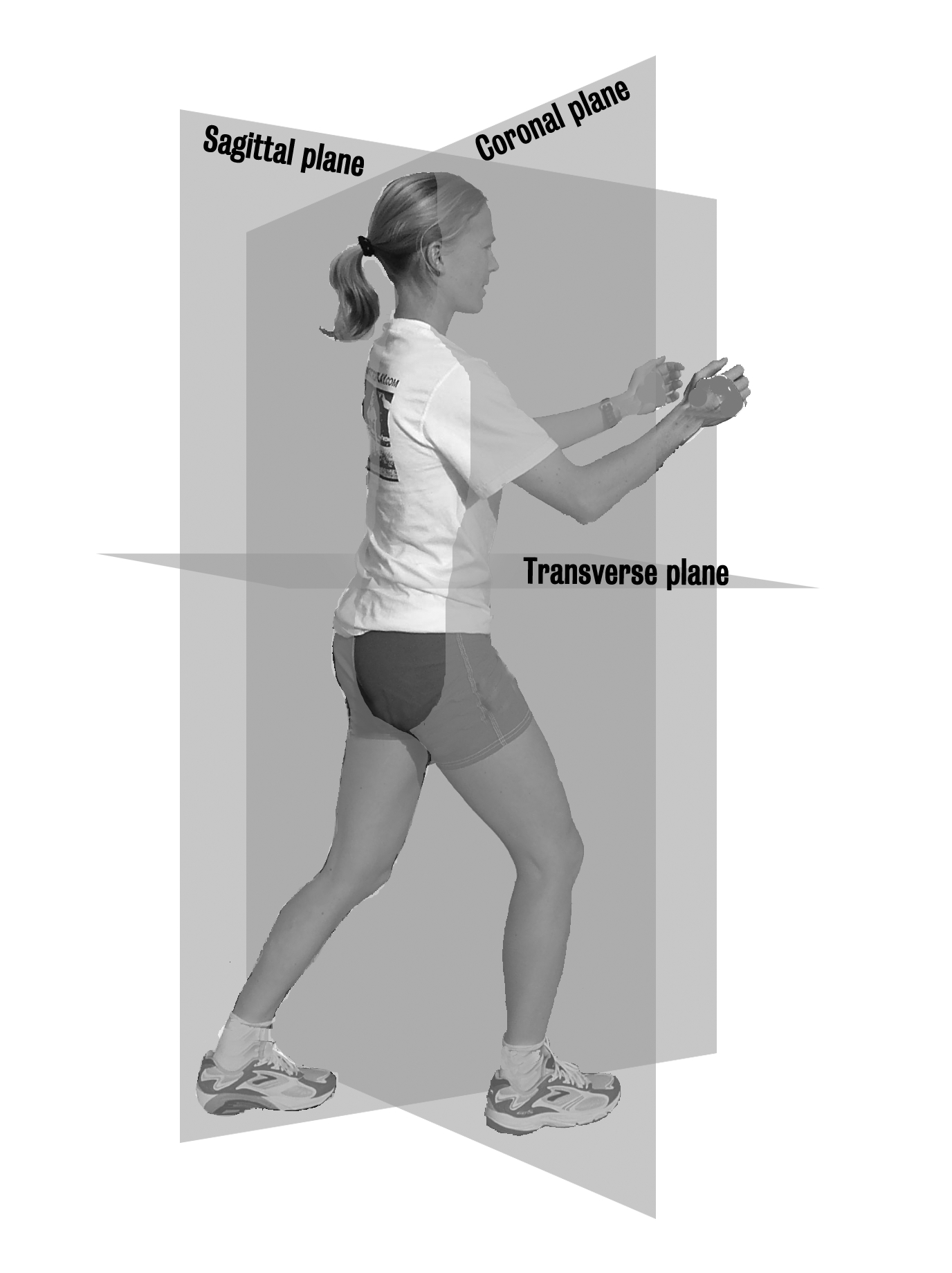
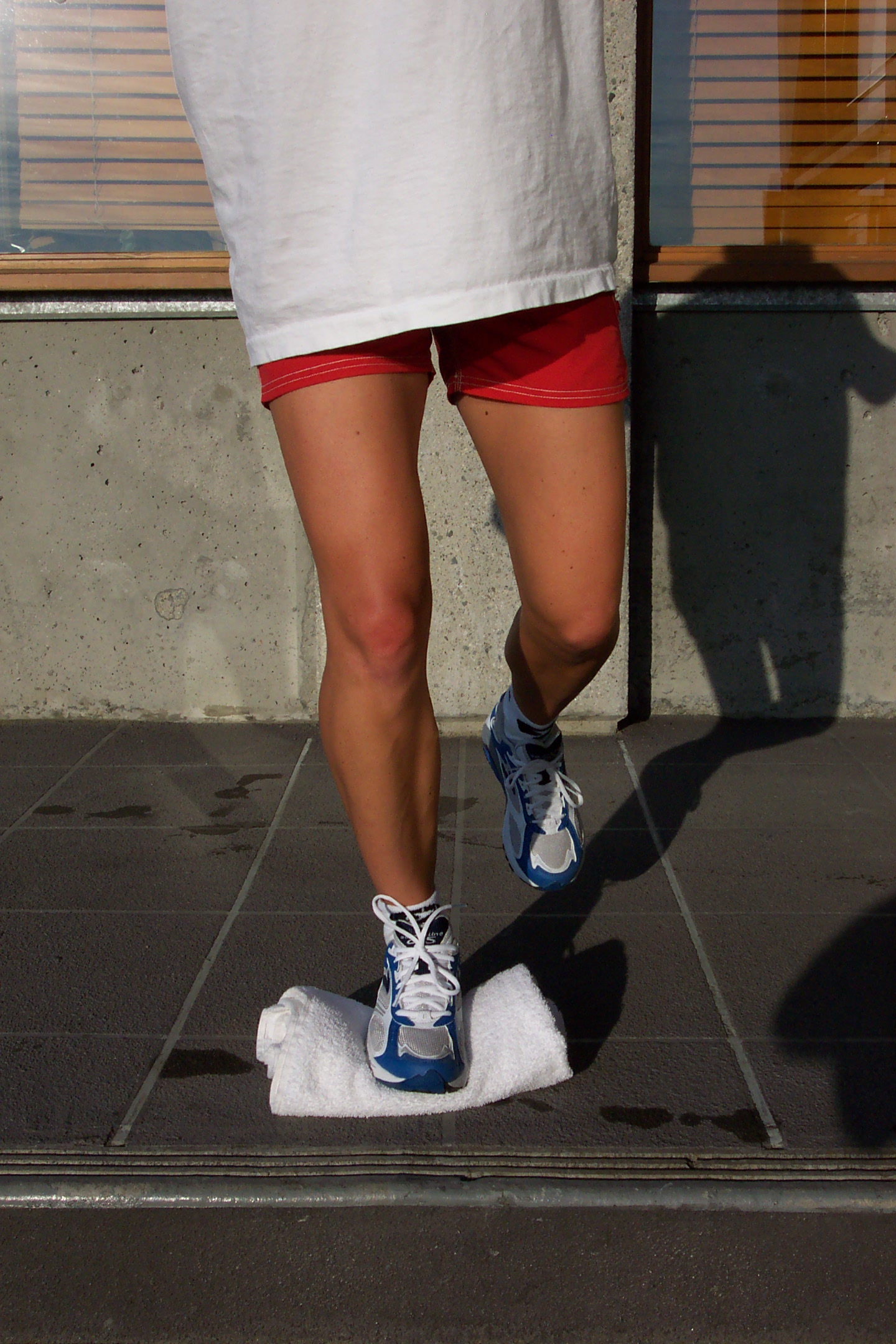
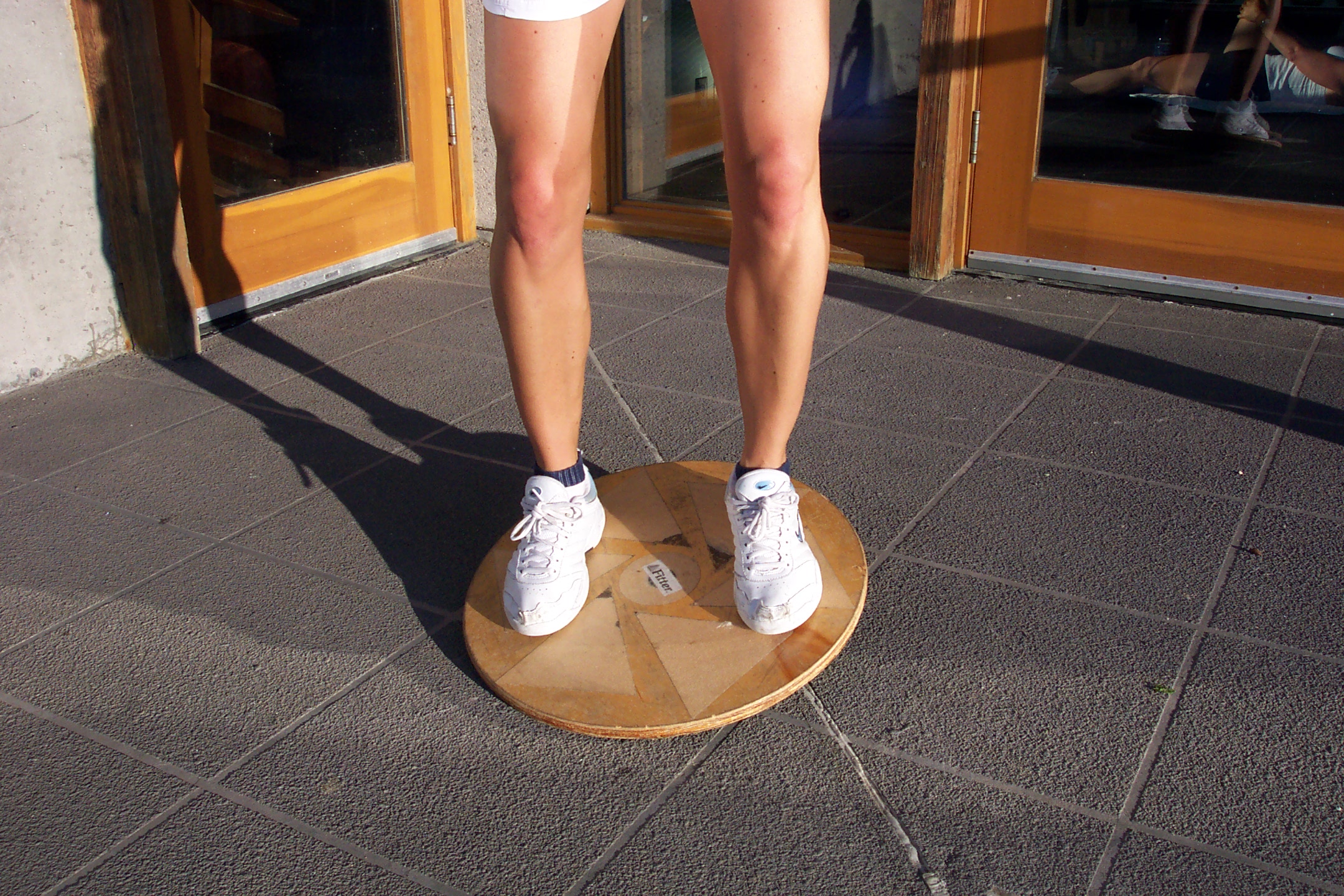
As they age senior players are losing muscle mass and the associated balance, coordination, stability and strength can be compromised. These players should augment their training and fitness routines with some simple balance exercises. However if they notice prolonged balance issues or dizziness they should visit their primary health care provider to rule out more serious problems.
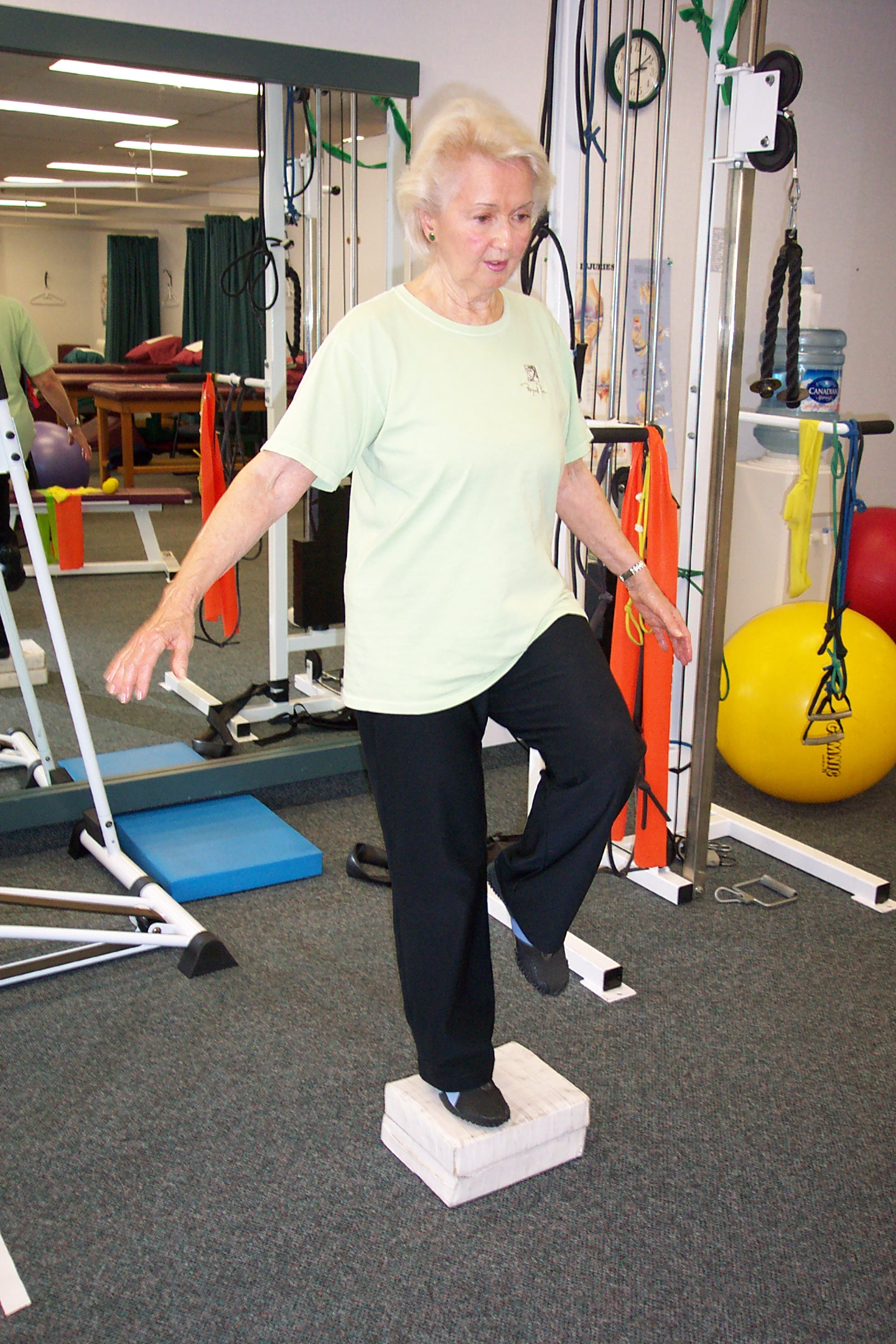
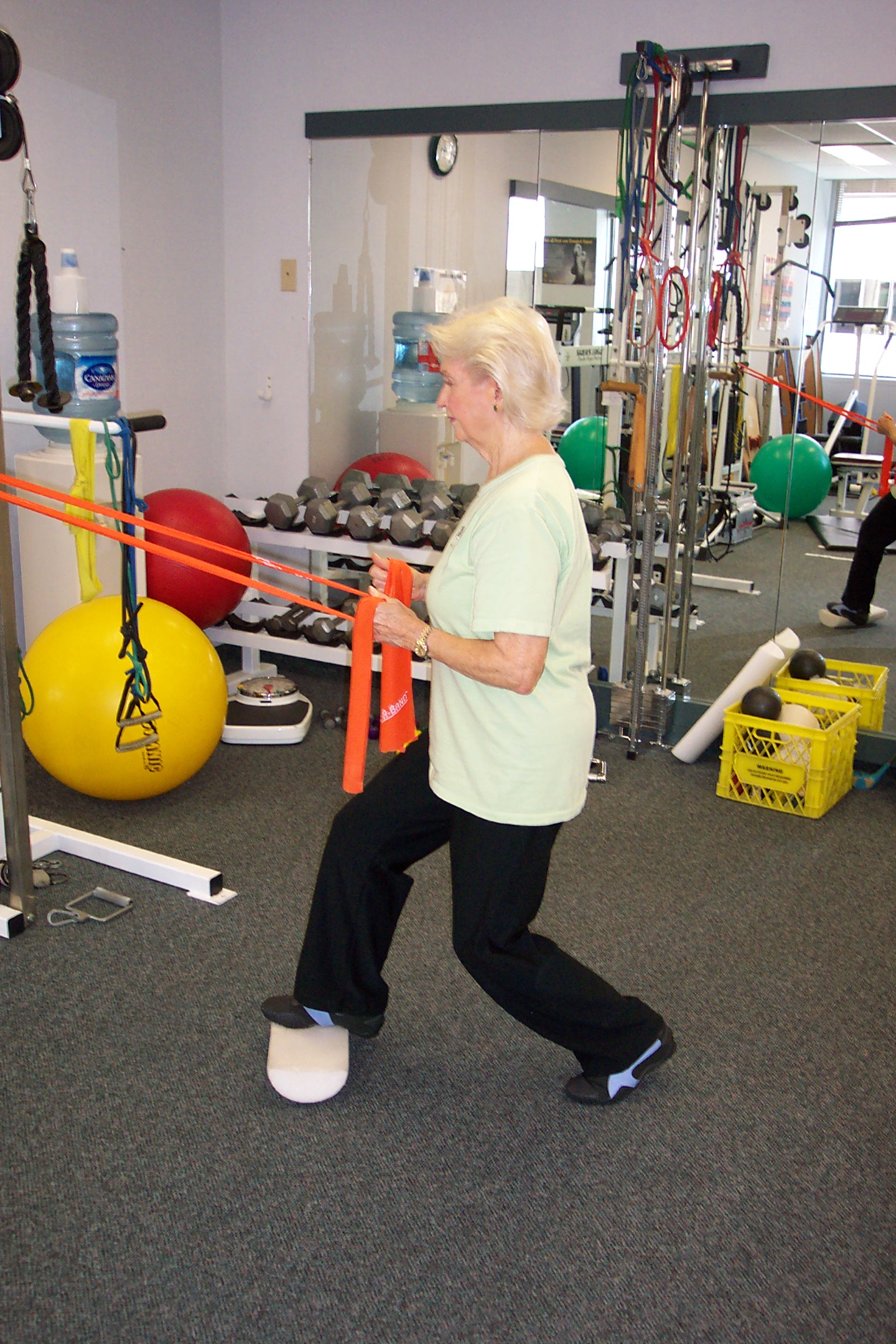
Why Balance Exercises are Important:
- They minimize problems associated with playing a one-sided sport by doing balance exercises equally on both right and left sides.
- Work on joint sense (proprioception).
- Reset the balance clock with a variety of exercises.
- Stimulate the complex interactions of the neuromuscular system when incorporated with closed chain and functional exercises.
- Are especially important after injury where there is any joint swelling and decreased proprioception.
- Should be included as part of the daily training plan as well executed tennis strokes depend on an element of coordinated balance in many planes of movement.
BALANCED BODY STRENGTHENING
Balanced body strengthening ensures that equal stress is put on the different parts of the body in different planes of movement. This achieves a good balance of stress for the body’s upper and lower extremities and three-dimensional core cylinder. It is difficult to prove that muscle strength imbalances are the primary cause of an injury or a performance decrement but they are a potential risk factor for injury.
Work both sides equally to get a good balance between:
- Right and left sides.
- Flexor and extensor muscles.
- Medial and lateral rotators.
- Upper and lower body and core.
- Strength training should include exercises for all of the above areas. Try 2–3 upper body, 2–3 lower body and 3–4 core exercises to ensure a good balance.
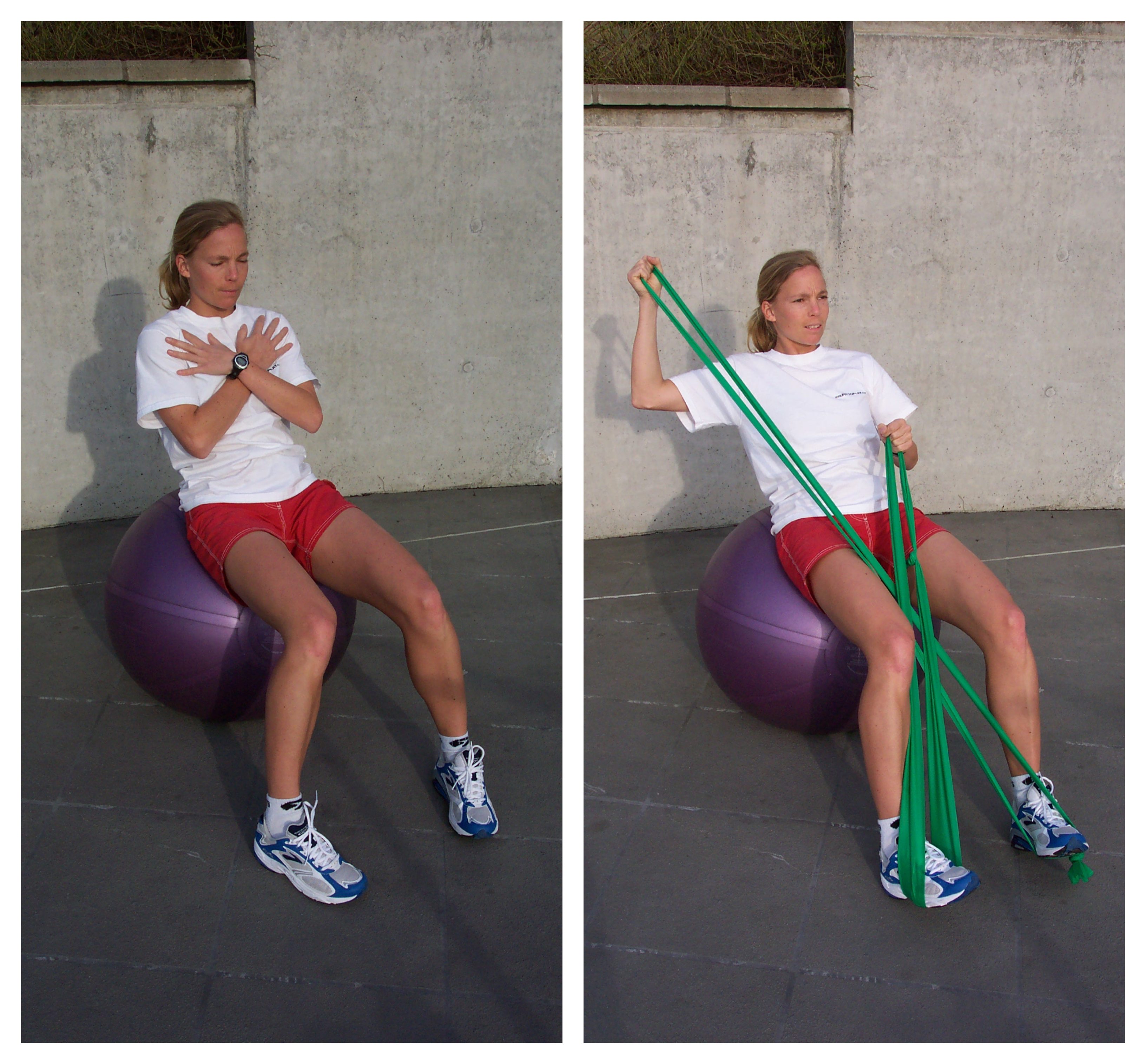
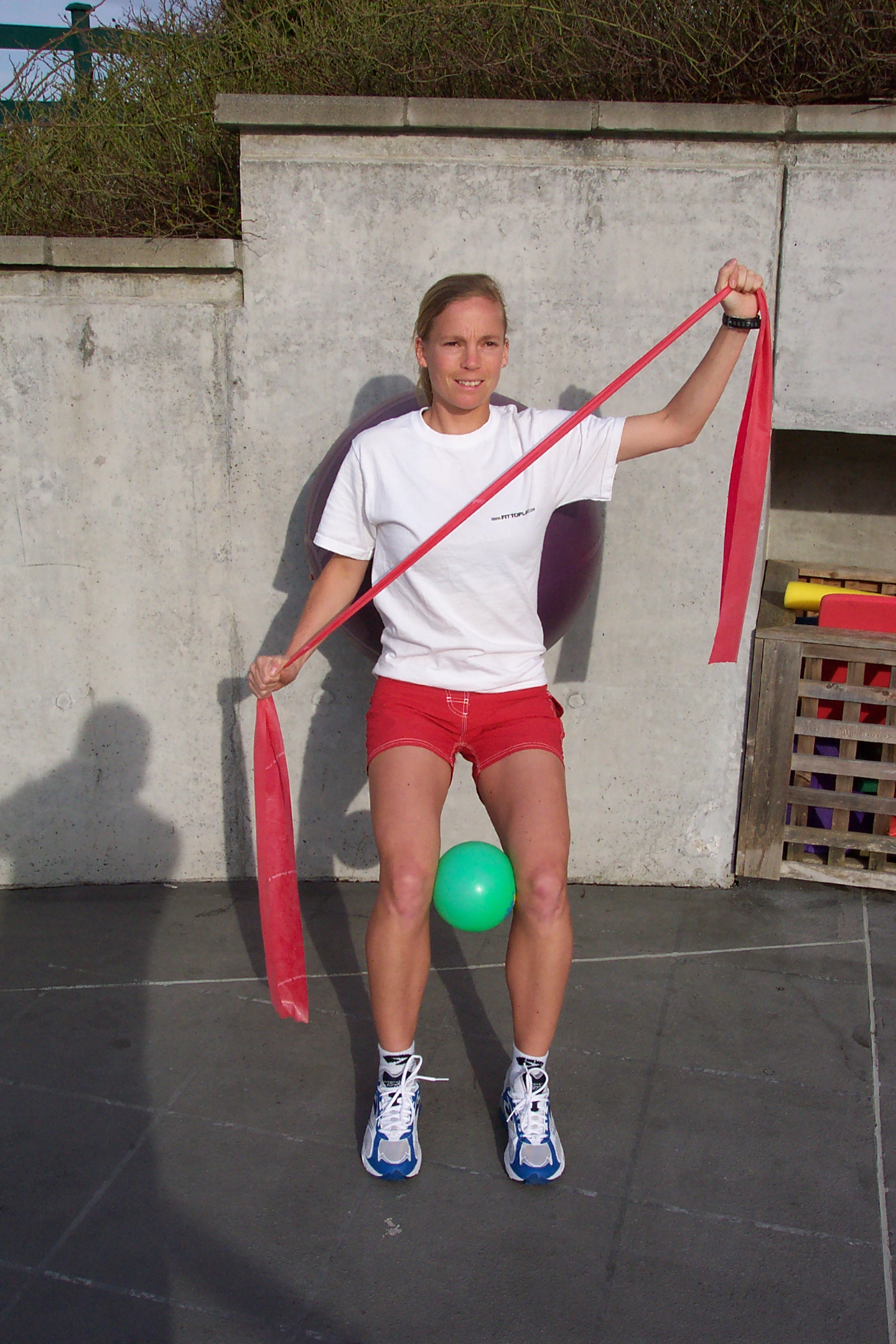
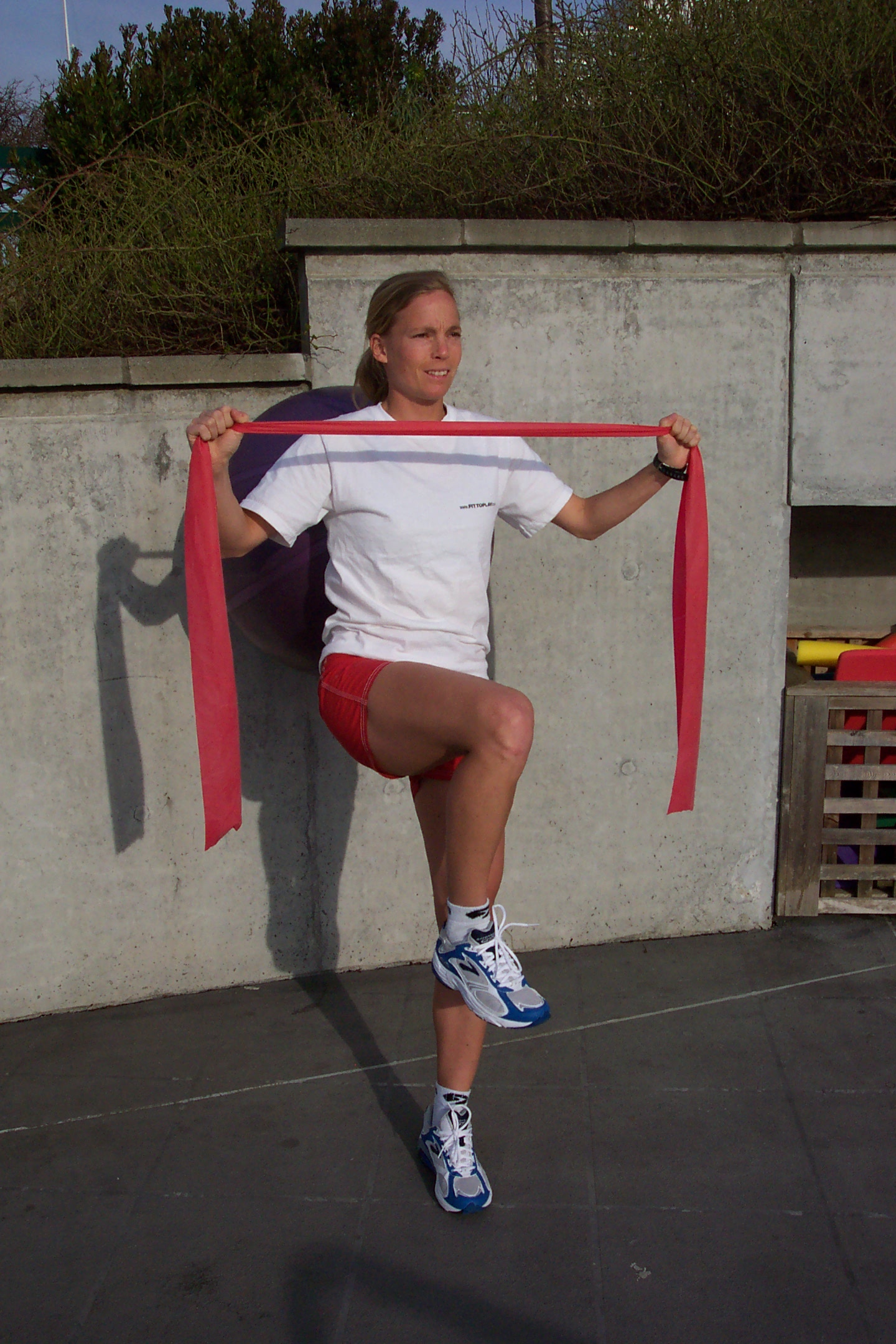
 Carl Petersen is a Partner and Director of High Performance at City Sports & Physiotherapy Clinics in Vancouver. He has co-authored the book Fit to Play™-Tennis and the DVD series Fit to Play™ & Perform with Swiss based coach Nina Nittinger. Info at www.citysportsphysio.com or e-mail carl@citysportsphysio.com. For more training info follow Carl on Twitter @Fit2PlayCarl.
Carl Petersen is a Partner and Director of High Performance at City Sports & Physiotherapy Clinics in Vancouver. He has co-authored the book Fit to Play™-Tennis and the DVD series Fit to Play™ & Perform with Swiss based coach Nina Nittinger. Info at www.citysportsphysio.com or e-mail carl@citysportsphysio.com. For more training info follow Carl on Twitter @Fit2PlayCarl.
